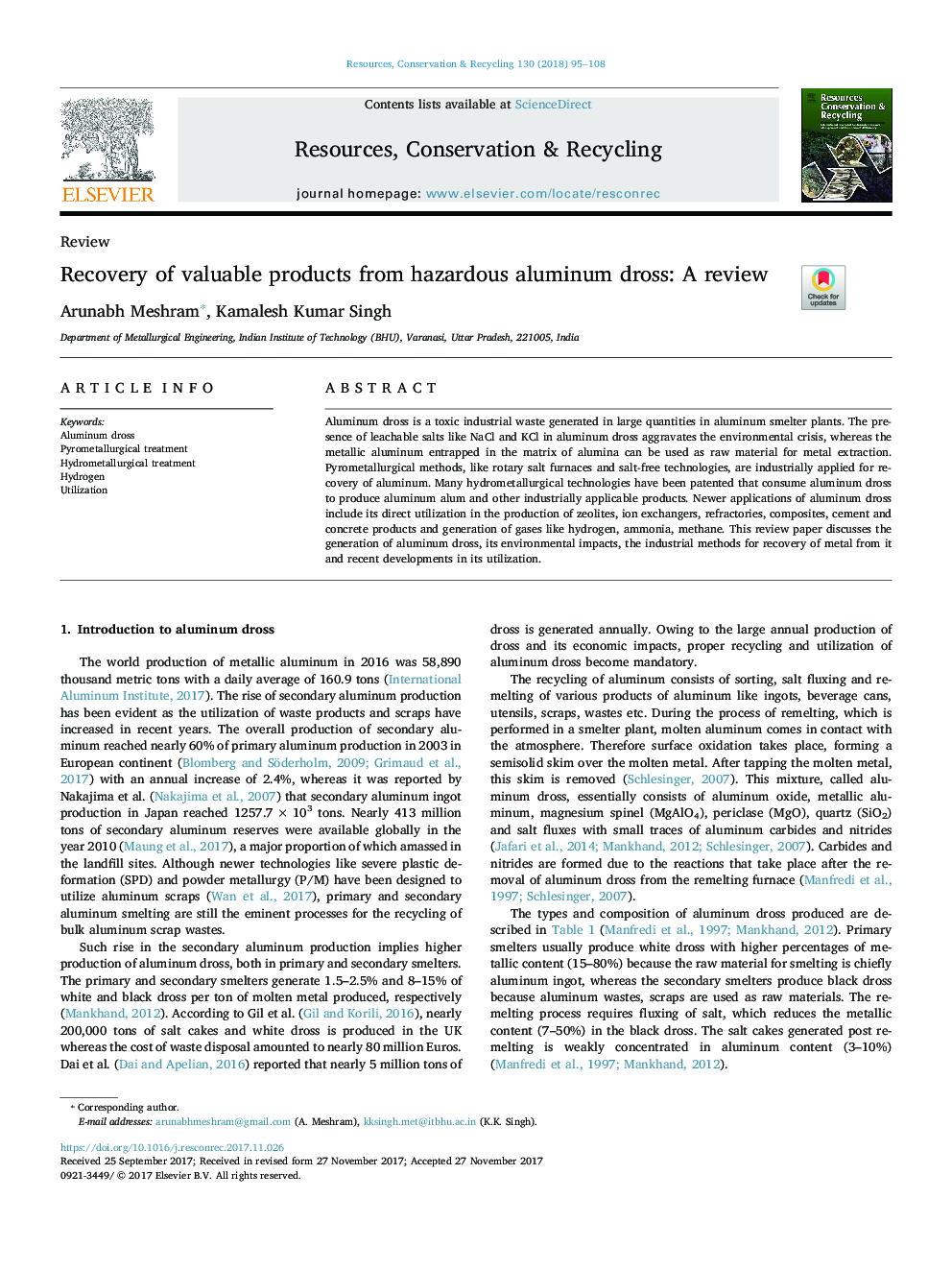| Article ID | Journal | Published Year | Pages | File Type |
|---|---|---|---|---|
| 7494436 | Resources, Conservation and Recycling | 2018 | 14 Pages |
Abstract
Aluminum dross is a toxic industrial waste generated in large quantities in aluminum smelter plants. The presence of leachable salts like NaCl and KCl in aluminum dross aggravates the environmental crisis, whereas the metallic aluminum entrapped in the matrix of alumina can be used as raw material for metal extraction. Pyrometallurgical methods, like rotary salt furnaces and salt-free technologies, are industrially applied for recovery of aluminum. Many hydrometallurgical technologies have been patented that consume aluminum dross to produce aluminum alum and other industrially applicable products. Newer applications of aluminum dross include its direct utilization in the production of zeolites, ion exchangers, refractories, composites, cement and concrete products and generation of gases like hydrogen, ammonia, methane. This review paper discusses the generation of aluminum dross, its environmental impacts, the industrial methods for recovery of metal from it and recent developments in its utilization.
Keywords
Related Topics
Physical Sciences and Engineering
Energy
Renewable Energy, Sustainability and the Environment
Authors
Arunabh Meshram, Kamalesh Kumar Singh,
